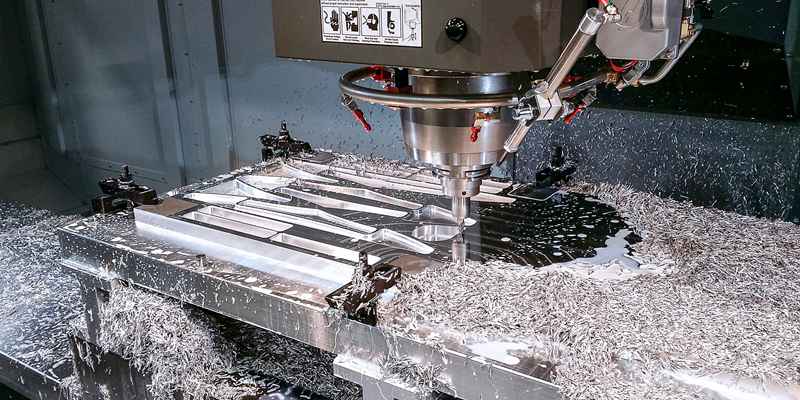- December 8, 2023
One of the most widely used CNC machining techniques is milling. It is a process ideal for use in manufacturing and surface finishing of parts. it enables high precision, reproducibility, and output rate levels. Numerous industries use CNC milling, including the automotive, aerospace, robotic, and medical sectors.
The CNC milling process will be covered in this article, along with other milling basics such as definition, milling types, and the essential tools and how to save cost with this process.
Definition of Milling
The term “milling” refers to any rotary cutter-based machining operation used in manufacturing to remove material from a workpiece. Furthermore, it’s an adaptable method that can create many forms and surface treatments in various materials. It also involves the use of different types of machinery.
There are two types of milling operations: manual and automatic (CNC) milling. Manual milling refers to the conventional method of shaping and fabricating items by hand with hand tools and manually operated machinery. Getting the intended results mainly depends on the knowledge, proficiency, and experience of the operator. Here, we’d discuss CNC milling in detail. Do read on.
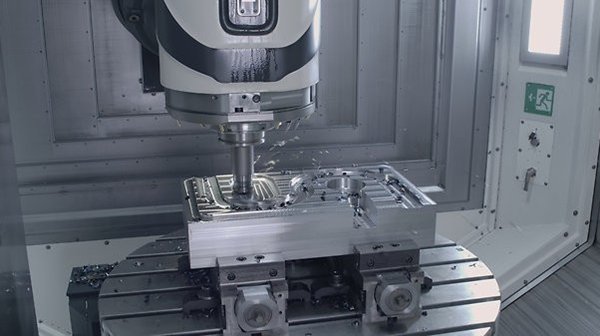
What is CNC Milling?
So, what is CNC Milling? CNC milling is a common machining technique with computer-controlled equipment controlling the operation. Using a spinning tool, milling cuts materials like plastic, metal, or wood. With the CNC milling process, the computer controls the spindle RPM and feed rate, the order in which the tools are utilized, and the toolpath of each cutter.
The rotation of the cutting tool will depend on the type of CNC milling machine and its level of sophistication. Most CNC milled parts can reach high tolerances between +/-0.001 inches to +/-0.005 inches. Some machines can even achieve tolerances up to +/-0.0005 inches.
Also, there are different milling axes operations, from 3, 4, and 5-axis to multi-axis milling. The 3-axis milling moves in the X, Y, and Z axes. In contrast, 5-axis milling machines move in linear X, Y, and Z directions and rotary A, and B, producing more complicated parts.
CNC Miller Axes Basics
CNC Millers operate in two major axes: the linear axes and rotary axes.
Linear Axes
CNC machines are based on the Cartesian Coordinate System, which is extensively utilized in mathematics and computer-aided design (CAD) software. Three linear axes in this system are perpendicular to one another and intersect at the origin.
These are the X, Y, and Z axes, these axes describe the direction of a cutting tool. The X-axis is the motion that moves parallel to the cutting tool from left to right. The Y-axis is motion perpendicular to the cutting tool, moving from front to rear. On the other hand, the Z-axis is the movement from bottom to top.
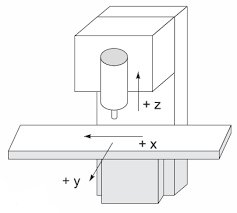
Rotary Axes
The name “rotary axes” comes from their connection to rotation. Furthermore, it becomes evident how the rotary and linear axes relate because these rotations always revolve around one of the three linear axes. There are three rotary axes, and their relationship usually looks like this:
The tilt or rotation around the X axis is called the A axis, or tilt axis for short. The rotation around the Y axis is called the B axis, and the rotation around the Z axis is called the C axis.
How Does CNC Milling Work?
It is vital to give a complete overview of the milling process. This will help you get the complete picture of how it works. Generally, the CNC milling operation occurs in three phases:
1. Designing the CAD Files
The first phase involves creating a virtual representation of your intended product using CAD software. You can use different CAD-CAM programs to develop the needed G-code for machining. It is essential to translate the CAD design into a CNC programming language because that is what the machine will understand.
You can check and amend the code to meet the machine’s capabilities. The software also enables manufacturing engineers to simulate the entire milling process. As a result, they can check for design errors and avoid creating complex models that are too difficult to machine.
The operator also requires a technical engineering drawing that contains information like:
- Dimensions and critical features of a part
- Tolerances
- Construction lines
- Indication of threads
- Finishing preferences
2. Setting Up the Milling Machine
Although the CNC milling machines automatically cut the workpieces, some aspects of the process require a machine operator. For instance, an operator has to fix the workpiece to the worktable and attack the cutting tools for the spindle.
Modern milling machines have live tooling capabilities. Therefore, they have the ability to change tools during the milling process. This reduces the number of stops that will occur during the operation. However, there’s still a need for initial setup and program checks before starting the process.
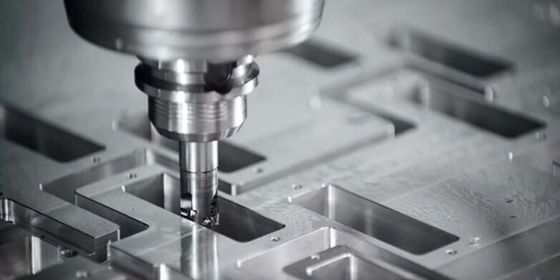
3. Producing the Components
As mentioned earlier, CNC milling uses a rotating tool(s) that cut off chips when it contacts the workpiece. Continuous rotation of the tool gives the desired shape. The process may comprise different operations depending on the type of raw material and desired shape of the final product.
The first few operations use larger tools to carve out materials and get an approximate shape. Then, a tool change will help create more accurate machined parts. The precision CNC milling is achieved in the last stages, involving unmatched levels of surface roughness and engineering tolerances.
Various CNC Milling Operations
A CNC milling center can produce several complex features with high accuracy. Such features include threads, chamfers, slots, etc. However, creating these features requires various milling operations such as:
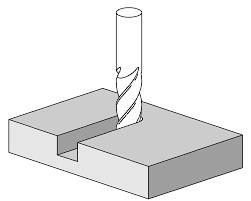
Plain Milling
It is also known as surface milling, this operation uses a horizontal mill. Thus, the cutting tool has a rotational axis parallel to the work table. Plain milling uses different cutters of different shapes and orientations based on the desired outcome. A combination of a wide cutter (with fast feed rate) and finer cutting teeth (with faster cutting speed) is a great choice for cost-effectiveness. It also ensures better surface finishes and high-quality end products.
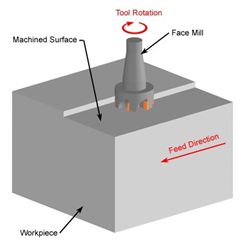
Face Milling
This type of milling uses cutting tools with teeth on the sides and the end. The side teeth do the major cutting work, with other teeth on the tip helping with the surface finish. Face milling usually comes after surface milling because it can create intricate contours and leave a high-quality finish.
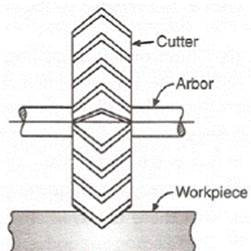
Angular Milling
This is one of the best milling operations to create grooves, chamfers, slots, and other intricate features. The traditional 3-axis mills use different cutters — dovetail cutters for angled grooves or conical cutting heads to produce chamfers. The cutter’s axis is often perpendicular or in line with the cutting surface.
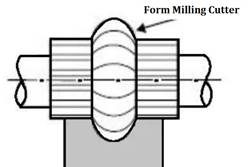
Form Milling
This milling operation uses special tooling for creating more complex contours. Concave and convex cutters are the most common ones here. They help create surface contours, round edges, and round recesses in just one cut.
Other Milling Operations
Asides from the aforementioned milling operations, CNC milling machines can accomplish other types of specialized milling operations like:
Profile milling: Here, the tool creates a cutting path along an angled or vertical surface on the stock bar. The process uses a profile milling tool that may be parallel or perpendicular to the surface of the workpiece.
Gang milling: This is a subcategory of form milling that uses several cutters to create patterns simultaneously. The cutters typically have varying shapes, sizes, or widths. They may perform similar or different operations to create more complex features or intricate parts within shorter periods.
Straddle milling: This milling operation allows a machine tool to work on two or more parallel workpieces with a single cut. Two cutters are arranged on either side of the workpiece to mill both sides on the same machine arbor.
Essential CNC Milling Tools in the Machining Process
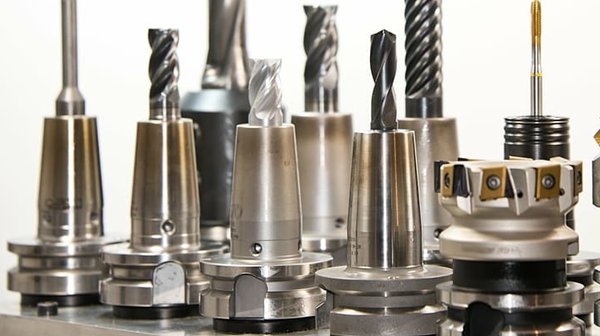
Although many CNC milling tools are used, not all are essential. Here are some essential milling tools used.
Taps
Threads are carved into materials like metal or plastic using taps. They are available in an array of shapes and sizes, encompassing both manual and automatic taps. When attached to milling machines, it can create threaded holes. Besides, this milling tap tool is ideal for use on softer materials like plastics, brass, copper, and aluminum.
Drill Bits
Wood and metal can be drilled with circular holes using drill bits attached to milling machines. They are available in a range of shapes and sizes, including spade and twist drills.
Additionally, drill bits are essential in CNC milling for accurately forming conic holes before drilling, which helps stop drilling bored holes incorrectly.
End Mills
Cutting tools for drilling and milling are called end mills. They are constructed of materials like carbide or high-speed steel and come in various sizes and forms. Besides, they can be utilized in various cutting applications, including side, face, ramp, plunge, and slot milling, and are crucial for shearing away large amounts of material.
Components of A CNC Milling Machine
Here, we will analyze the components that makeup CNC milling machines. Although new mills are a little complex, we will stick to the traditional milling centers to give a proper overview. The essential components of milling machines are:
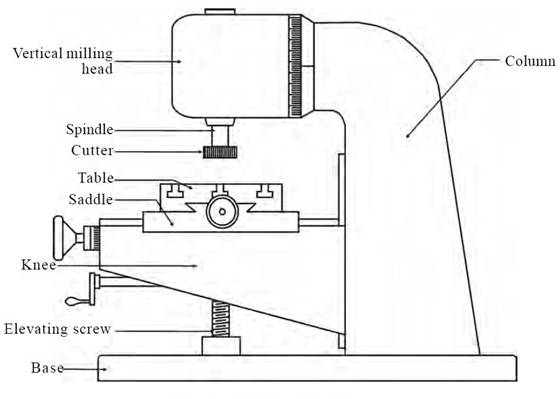
1. Frame
This main structure supports the machine and gives it rigidity and stability. It has a base and detachable column(s). The machine headstock is an essential part of the frame for mounting the main spindle, preventing vibrations or chattering during machine operations. This prevents machining errors and prolongs the lifespan of the cutting tool.
2. CNC Control Panel
You can refer to this as the “nervous system” of milling centers. It consists of the various electronics needed to control the different cutting actions using programming functions. The main components of the control panel are the CNC monitor and programming buttons. Most CNC mills shave easily accessible control panels for easier machining.
3. Axes
CNC milling machines have X, Y, and Z axes. Depending on configurations, they also come with additional rotational axes (A, B, and C). They are often programmed with the G-code in the CNC controller.
4. Column
This machine component offers structure and support to other components of the mill. It comes with an affixed base and may include internal components that aid the CNC milling operation. Such internal features include coolant and oil reservoirs.
5. Worktable
This component is the solid base that allows the fastening of the workpiece. In other words, it holds the stock bar, vice, or fixture in place. Depending on the milling machine used, the component can be adjusted vertically, horizontally, or in both directions. Most worktables use T-slots to ensure easy clamping of the workpiece.
6. Spindle
The spindle comprises a tapered section for positioning tool holders. It also has a rotating assembly and a shaft for attaching the cutting tool. Depending on the type of milling machine, the spindle may be horizontally or vertically positioned.
7. Arbor
This is the shaft component put in the spindles of horizontal milling machines. They allow the mounting of multiple machine tools. Arbors are available in different lengths and diameters based on the specifications required.
8. Ram
You would typically find this machine component in vertical milling machines. It is usually attached to the column supporting the spindle. Operators can adjust the ram to take different positions during the milling process.
9. Machine Tool
This is the component that carries out the material removal. There are several tools available for milling depending on milling specifications. They vary based on arrangement, number, teeth spacing, diameter, length, and geometry.
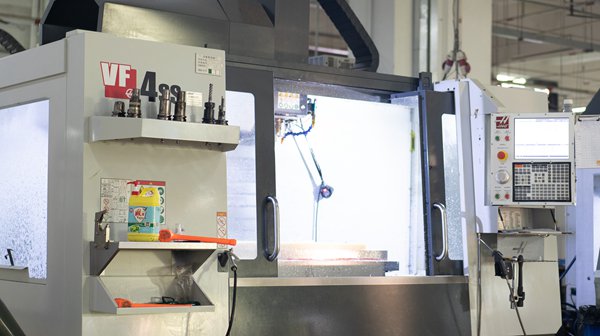
Types of CNC Milling Machines
There are different types of CNC milling machines that are ideal for different purposes. These machines include:
Vertical Milling Machines
This vertical milling machine has three axes of motion. It has a table that serves as a spindle and a work surface. As the name implies, the spindle axis of a vertical milling machine is oriented vertically. Furthermore, the spindle holds the cutters’ axis as they rotate. There are two classes of vertical CNC milling machines.
- Bed Mill: The table of a bed mill only travels perpendicular to the spindle’s axis. On the other hand, the spindle spins in front of its axis.
- Turret Mill: The turret mill features a stationary spindle and a table that may move parallel and perpendicular to the spindle axis. The quill, a feature of certain turret mills, raises and lowers the milling cutter tools. The Turret mill is more versatile.
Horizontal Milling Machines
The spindle axis orientation distinguishes a vertical milling machine from a horizontal milling machine. The spindle axis is aligned horizontally here.
The longer or heavier workpiece is best suited for horizontal milling machines. The rotary table on many horizontal milling machines enables the machine to grind at different angles.
Knee Type
The worktable on these machines can be adjusted vertically and has a fixed spindle. The knee supports it while it lies on the saddle. The knee can be elevated or dropped. Examples of knee-type milling machines include floor-mounted bench-type plain horizontal milling machines.
Planer Type
They resemble bed-type milling machines in certain ways. Their work tables are set along the Z and Y axes. The spindle can move in X, Y, and Z axes. Nonetheless, several machine tools can be supported by planer-type milling machines.
Bed Type
Bed-type milling machines have a worktable fastened directly to the bed of the machine. Workpiece movement along the Y and Z axes is inhibited.
Additionally, Bed-type milling machines can be classified as simplex, duplex, or triplex. The duplex and triplex use two and three spindles, respectively, whereas the simplex, as suggested by its name, only has one spindle that moves in either the X or Y direction.
Different Multi-axis Milling Machines
These machines can move along different axes and mill at different angles. Common multi-axis milling machines can be:
3-axis Mills
3-axis vertical mills allow the table to move in the X and Y directions. With these machines, the workpieces can be positioned relative to the cutting tool. The operator can then add the Z-axis by lowering the cutting tool. CNC tools ensure simultaneous movements of the three axes, offering the needed flexibility for your needs.
4-axis Mills
These mills have all three axes, as mentioned above. But one other axis comes in here — the A-axis. The addition of another axis allows the table to rotate around the X-axis. This provides room for face milling without repositioning the workpiece.
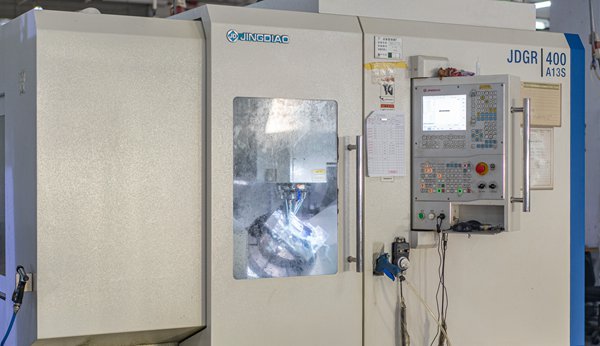
5-axis Mills
Everything true for 4-axis mills applies here but with an addition of the B-axis. This addition helps the table rotate around the Y-axis. 5-axis CNC milling machines are more expensive than the above-discussed options, but they allow the production of complex parts in a single operation. They do not require extra setups and are compatible with live tooling.
6-axis Mills
6-axis milling machines are not yet standard due to their high cost. They have stationary worktables with complete freedom of movement for the cutting head. That is, the head can move in and around the X-, Y-, and Z-axis.
How Much Does a Milling Machine Cost?
The cost of a milling machine is one of the factors affecting the CNC machining cost. However, this cost varies depending on the sophistication of the machine. For example, entry-level or toolroom 3-axis vertical milling machines cost between $50K to $80K. In contrast, entry-level 5-axis milling machines cost between $100K to $400K.
Likewise, production-level 3-axis vertical mills cost between $150K to $300K, while the production-level 5-axis mill is over $500K. These are rough valuations that will depend on factors like:
- Weight and size of the Machine (measured in the X/Y/Z travel)
- Machine configuration (3, 4, 5, or 6-axis)
- Machine speed
- Power
- Other options available, e.g., coolant pressure, chip conveyor, automatic tool changer, robotic part loader, etc.
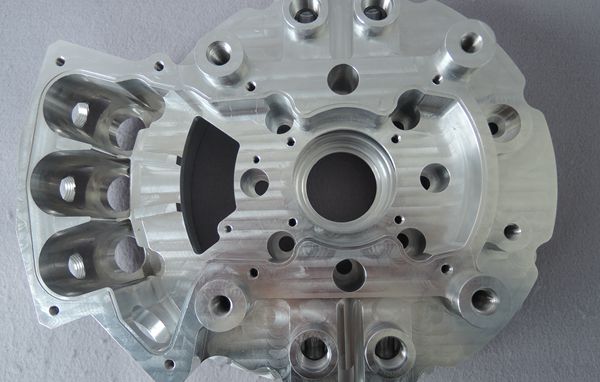
Tips to Migrate Cost in the CNC Milling Process
Here are some professional suggestions that can help reduce the cost and time of the CNC milling project.
Work with Feasible Materials
Machining time, or the time spent producing a product, is just as crucial to cost savings as choosing a material. The raw material and part design are the main elements determining machining time.
Besides, machining complex part designs with extremely precise dimensions is difficult and costly. Select materials that are easy to work with as much as feasible will help you resolve this. By choosing machinable materials like brass, aluminum, and low-carbon alloys, you can also reduce the amount of time that needs to be spent on machining. Hard metals like steel are more difficult to process and easily cause tool breakdowns.
Use Tight Tolerances for Critical Features Only
When it comes to fine CNC machining, specifications are essential. However, finer tolerances in part design significantly affect production costs.
For general features, it is advised that you continue to allow standard tolerances. You can define tolerances for a few crucial features and functions if required. Likewise, keep the hole sizes for milling consistent. Deeper and smaller holes need more time to machine and can lead to tool breakage and consequent rise in production cost.
Cut Down Setup Time and Number of Setup
Every machined part goes through one or more processes. Each process requires several preparations, including machine and material setup, component fixturing (if needed), CAM programming (which varies according to the cutting, milling, and drilling procedures), and more. Hence, reducing the number of installations will help you avoid all the chaos and costs.
Besides, the majority of pieces can be finished in six setups or fewer. Reduce the number of required stages to one or two, if at all possible. The setup time will be cut in half or more with fewer setups. Besides, this technique will allow you to machine CNC-milled parts more quickly and accurately.
Keep Inside Corners at a Standard Radius
Inside corners are subject to the standard specifications’ requirements as well. It is costly, time-consuming, and requires special equipment to mill inside corners with small, precise radii particularly when working with very small cutters. This is because workpieces are typically subjected to vertical milling operations by CNC machines.
For most machined items, an appropriate inner corner radius is 3 mm or ⅛ inch. Consequently, adhering to conventional radii can save setup costs and time for noncritical features.
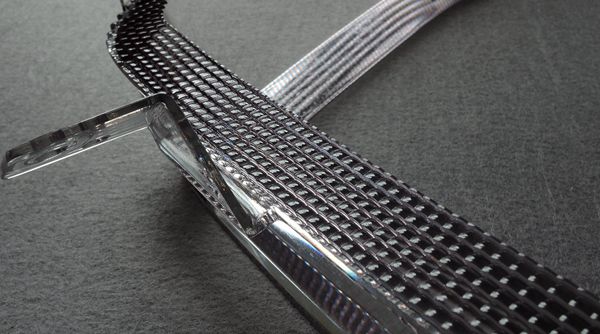
Common Materials for CNC Milling Operations
CNC milling works on a wide variety of materials. Your choice of material will depend on the requirements and specifications of your applications. The most common materials include:
Metal Materials for Milling
- Aluminum alloys
- Stainless steel
- Mild steel
- Tool steel
- Brass
- Copper alloys
- Titanium alloys
Plastics Materials for Milling
- POM
- ABS
- Nylon
- Polycarbonate
- PEEK
- PTFE (Teflon)
- Polyethylene
- PMMA (Acrylic)
- HDPE
- PVC
- Polypropylene
Pros and Cons of CNC Milling in Part Manufacturing
The CNC milling process is essential for various industrial processes because of its advantages. Nevertheless, there are disadvantages to note. Here are some of the benefits and downsides of this manufacturing technique.
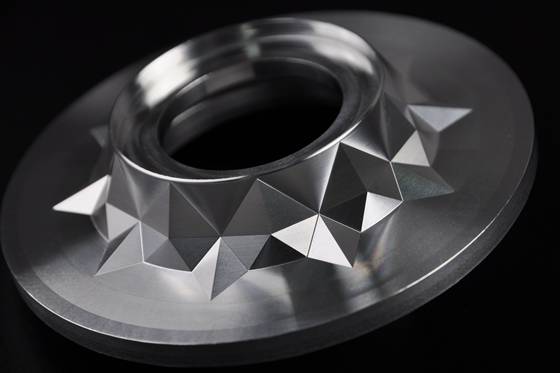
Pros of CNC Milling
Accuracy and Precision
The nature of CNC milling operations leaves minimal room for errors, thereby ensuring higher accuracy and precision. This technique can produce parts that meet exact technical specifications and tolerance requirements.
Most CNC milled parts can reach high tolerances between +/- 0.001 inches to +/- 0.005 inches, while some can be up to +/-0.0005 inches. The automation of the process also limits human errors. Even if you require surface treatment, micro-milling allows the removal of some thickness to prevent affecting the part’s dimension.
Efficiency and Repeatability
CNC milling centers offer high production output because of the automation involved. Advanced milling machines can produce parts faster with more consistent quality and finish.
Wide Material Compatibility
This process is suitable for an extensive array of materials, including metals, plastics, glass, and wood. This further increases its versatility and makes it perfect for various applications.
Less Labor Intensive
The automation and high output of CNC milling machines significantly reduce the labor used for the process. These machines also allow live tooling, ensuring tool changes without stopping the operation. Very few operators would be required for the process.
Cost-Effective
CNC milling machines efficiently produce complex products faster and more accurately. This reduces the time spent in the production stage. Moreover, the lesser labor requirements further reduce the costs of the process.
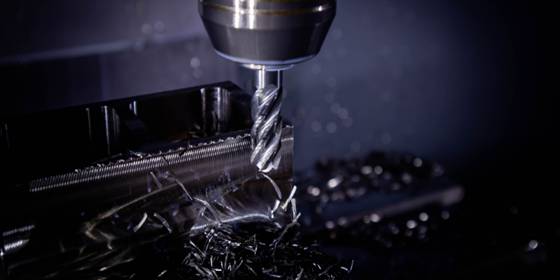
Cons of CNC Milling
High Machine Cost
The initial investment cost for CNC milling machines is higher than traditional manual equipment. This may drive up overall manufacturing costs.
Requires Intensive Training of Operators
Not just anyone can operate CNC milling machines. From designers to programmers and machine operators, there’s a need for adequate training to get the best from the process.
High Level of Maintenance
Milling machines must be constantly maintained to ensure they function properly and increase tool life. This increases the downtime of using the milling machines.
Which Industries Use CNC Milling for Their Applications?
Several industries enjoy the advantages and multiple applications of CNC milling. Here are some of its industrial applications:
Aerospace Industry
The milling process is also suitable for making aerospace parts with materials like aluminum and titanium. These materials are durable and lightweight, and they ensure accurate machining of desired components.
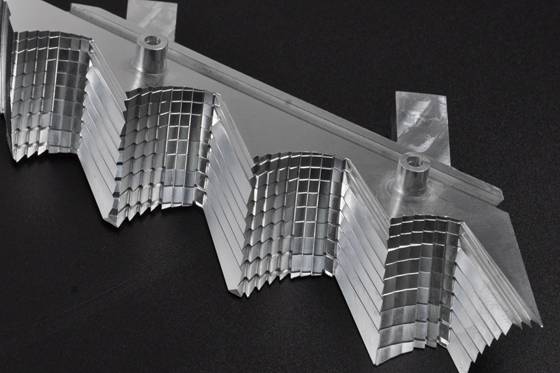
Automotive Industry
Products made for the automotive industry must be efficient and precise. Thus, CNC milling is suitable for producing interior panels, drive axles, cylinder heads, gearboxes, exhaust parts, suspension components, etc.
Medical Industry
Medical and surgical tools often have unique designs that require optimal precision. This makes CNC milling one of the best methods for creating such components. This way, the designs are retained with increased efficiency and productivity.
Consumer Products
CNC milling operation also helps produce general-purpose components. These items include nuts and bolts, gears and shafts, flanges, etc. The process is suitable for both short- and large-scale production.
Alternatives Process for Milling Operations
Grinding
Compared to milling, grinding may remove tougher materials and produce products with finer finishes and closer tolerances. Many items are CNC milled before grinding, but some grinding is done wholly from rough stock using a technique known as abrasive machining. When there is little metal to be removed and surface smoothness and dimensional precision are crucial, grinding is frequently chosen over milling.
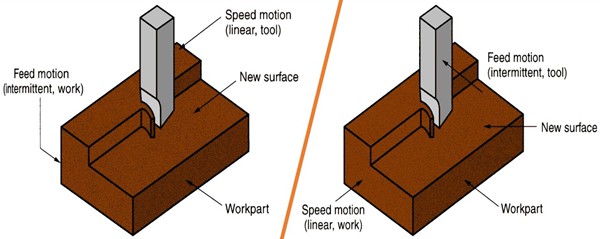
Planing or Shaping
A milling machine’s starting cost is significantly more than that of a planer or shaper that can also machine workpieces of the same size. Besides, setup periods are typically lengthier, and the cost of milling tools can reach 50 times that of other types of equipment.
Planing uses single-point cutting tools to remove material from the workpiece. it also works great to efficiently take out large amounts of material in a linear motion. However, this process is difficult to machine precision parts.
Broaching
This machining technique consistently, continuously, and accurately removes material from a workpiece with a sharp, hardened, toothed tool. During broaching, a tool with raised teeth of varying sizes is used to accurately remove a certain quantity of material with each pass over it.
Broaching is sometimes more cost-effective than milling when machining large quantities, but it also has drawbacks. A few of the drawbacks are that its process of machining is slower, and a bit challenging when used to machine tougher or harder materials. what’s more, setting up the machine can be time-consuming as compared to milling.
Future Trends in the Field of CNC Milling
Modern production now depends heavily on CNC milling, and as technology advances, additional trends and developments in this field will emerge. One of the recent advances is the increase in the versatility of the CNC milling machine, which makes it ideal for working with a wider range of materials.
Also, CNC milling machines and software are becoming more accessible and easier to use. This is due to an increase in the computational power of the CNC machines, reducing human involvement. What’s more, workstations with more powerful processors can help expedite the modeling and design work required to create the templates CNC milling machines utilize as the basis for their operations. Every link in the chain has benefited from technological developments and time savings as a result.
Choose WayKen for Your CNC Milling Projects
Are you concerned about finding high-quality CNC milling services at reasonable costs? Or perhaps you’re unfamiliar with the CNC milling process and are looking for companies that can produce excellent products. We at Wayken serve you the professional CNC milling solutions available.
Your CNC machining cost calculation will be simple when you work with us. We review your design and provide feedback in the shortest time possible. Contact us now!
Conclusion
CNC milling is suitable for several high-quality applications, regardless of the complexity. This cost-effective manufacturing process also saves plenty of time, ensuring operational efficiency and faster product to market.
FAQ
What is the difference between CNC milling and turning?
Their difference lies in the mode of operation. CNC milling involves holding the workpiece in place as the cutting tool rotates to shape the part. On the other hand, The definition of CNC turning uses a stationary cutting tool and a rotating workpiece.
What products can you make with CNC milling machines?
Milling machines can create any product so long it can be designed. You can get regular and custom parts, regardless of the complexity of their geometries.
What is the cost of CNC milling?
Several factors affect CNC milling cost, including raw material, part design, type of milling machine, production volume, and post-processing. Each element plays a unique role in determining the cost of your CNC milling project.

